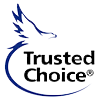Life Insurance & Disability Insurance
LIFE INSURANCE
Many financial experts consider life insurance to be the cornerstone of sound financial planning. It can be an important tool in the following situations:
1. Replace Income for Dependents
If people depend on an individual’s income, life insurance can replace that income if the person dies. The most common example of this is parents with young children. Insurance to replace income can be especially useful if the government- or employer-sponsored benefits of the surviving spouse or domestic partner will be reduced after he or she dies.
2. Pay Final Expenses
Life insurance can pay funeral and burial costs, probate and other estate administration costs, debts and medical expenses not covered by health insurance.
3. Create an Inheritance for Heirs
Even those with no other assets to pass on, can create an inheritance by buying a life insurance policy and naming their heirs as beneficiaries.
4. Pay Federal “Death” Taxes and State “Death” Taxes
Life insurance benefits can pay for estate taxes so that heirs will not have to liquidate other assets or take a smaller inheritance. Changes in the federal “death” tax rules through January 1, 2011 will likely lessen the impact of this tax on some people, but some states are offsetting those federal decreases with increases in their state-level estate taxes.
5. Make Significant Charitable Contributions
By making a charity the beneficiary of their life insurance policies, individuals can make a much larger contribution than if they donated the cash equivalent of the policy’s premiums.
6. Create a Source of Savings
Some types of life insurance create cash value that, if not paid out as a death benefit, can be borrowed or withdrawn on the owner’s request. Since most people make paying their life insurance policy premiums a high priority, buying a cash-value type policy can create a king of “forced” savings plan. Furthermore, the interest credited is tax deferred (and tax exempt if the money is paid as a death claim).
Source: Insurance Information Institute www.iii.org
For more information on Life Insurance, call us today or CLICK HERE to complete a questionnaire to assist us in properly evaluating your needs
Quick Tools
*Life Insurance Capacity Calculator
DISABILITY INSURANCE
Disabling injuries affect millions of Americans each year. Disability insurance, which complements health insurance, helps replace lost income if an individual is unable to work due to a disability.
There are three basic ways to replace income.
1. Employer-Paid Disability Insurance
This is required in most states, including New York. Most employers provide some short-term sick leave. Many larger employers provide long-term disability coverage as well, typically with benefits of up to 60 percent of salary lasting for a period of up to five years until the age of 65, and in some cases extended for life.
2. Social Security Disability Benefits
This is paid to workers whose disability is expected to last at least 12 months and is so severe that no gainful employment can be expected.
3. Individual Disability Income Insurance Policies
Other limited replacement income is available for workers under some circumstances from workers compensation (if the injury or illness is job-related), auto insurance (if disability results form an auto accident) and the Department of Veterans Affairs. For most workers, even those with some employer-paid coverage, an individual disability income policy is the best way to ensure adequate income in the event of disability. Workers who buy a private disability income policy can expect to replace from 50 percent to 70 percent of income. Disability benefits paid out on individual disability policies are not taxed; benefits from employer-paid policies are subject to income tax.
Types of Disability Insurance
There are two types of disability policies: Short-term disability and Long-term disability. Short-term policies have a waiting period of 0-14 days with a maximum benefit period of no longer than two years. Long-term policies have a waiting period of several weeks to several months with a maximum benefits period ranging from a few years to a lifetime.
Disability policies have two different protection features: noncancelable and guaranteed renewable. Noncancelable means that the policy cannot be canceled by the insurance company, except for nonpayment of premiums. This gives the policyholder the right to renew the policy every year without an increase in the premium or a reduction in benefits. Guaranteed renewable gives the policyholder the right to renew the policy with the same benefits and not have the policy canceled by the company. However, the insurer has the right to increase premiums as long as it does so for all other policyholders in the same rating class.
There are several options and factors to consider when purchasing a disability policy.
- Additional Purchase Options
The insurance company gives the policyholder the right to buy additional insurance at a later time.
- Coordination of Benefits
The amount of benefits policyholders receive from their insurance companies is dependent on other benefits they receive because of the disability. The policy specifies a target amount the policyholder will receive from all the policies combined and will make up the difference not paid by other policies.
- Cost of Living Adjustment (COLA)
The COLA increases disability benefits over time based on the increased cost of living measured by the Consumer Price Index. Policyholders will pay a higher premium if they select the COLA.
- Residual or Partial Disability Rider
This provision allows workers to return to work part-time, collecting part of their salaries and receiving a partial disability payment if they are still partially disabled.
- Return of Premium
This provision requires the insurance company to refund part of the premium if no claims are made for a specific period of time declared in the policy.
- Waiver of Premium Provision
This clause means that the policyholder does not have to pay premiums on the policy after he or she is disabled for 90 days.
Source: Insurance Information Institute www.iii.org
For more information on Disability Insurance, call us today or click here to complete a questionnaire to assist us in properly evaluating your needs.
Quick Tools




